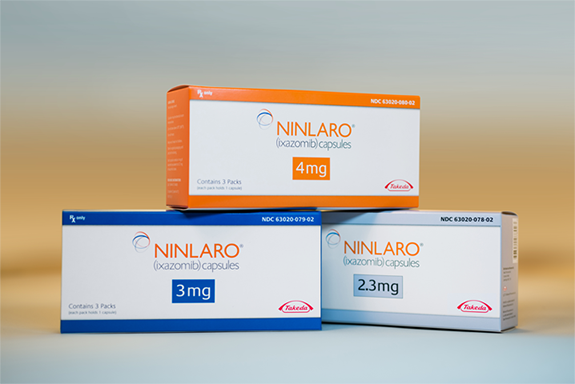Takeda’s myeloma drug Ninlaro approved in Europe

Takeda has gained European Union approval of its multiple myeloma drug Ninlaro for second line use – joining a wave of new treatments for the incurable condition.
Ninlaro (ixazomib) will be used in combination with lenalidomide and dexamethasone for adult patients with multiple myeloma who have received at least one prior therapy.
The approval was based on the drug’s pivotal phase 3 TOURMALINE-MM1 trial, which showed the drug plus lenalidomide and dexamethasone increased the length of progression-free survival by about six months, or 40%, in patients with relapsed and refractory multiple myeloma when compared with placebo, lenalidomide and dexamethasone.
The study also showed that the progression-free survival benefit observed in the Ninlaro regimen extended across pre-specified subgroups of patients. Follow-up analyses for overall survival are planned for 2017.
Alongside Ninlaro, Janssen’s Darzalex (daratumumab), Novartis’ HDAC inhibitor Farydak (panobinostat) and Bristol-Myers Squibb and AbbVie’s Empliciti (elotuzumab) all gained US approval in 2015.
Janssen’s Darzalex is one of the most hotly tipped, with analysts predicting peak sales of around $4 billion. All the companies in the field are continuing investment in new clinical trials to prove the value of the product, and increasingly in novel combinations in order to stand out from the crowd.
Darzalex has just gained a significant US approval for use in combination with standard second line therapy Revlimid and dexamethasonethe risk of disease progression or death by 63%, compared to Revlimid and dexamethasone alone.
Ninlaro is already licensed for use in the US, Canada, Israel, Australia and Venezuela, and is a key drug for Takeda’s future growth plans, expected to reach around $1.5 billion in peak sales.
Takeda’s TOURMALINE development programme for the drug covers a total of five ongoing pivotal trials. Four of these are in multiple myeloma patient populations, including first line use, while the fifth trial one in light-chain amyloidosis.










